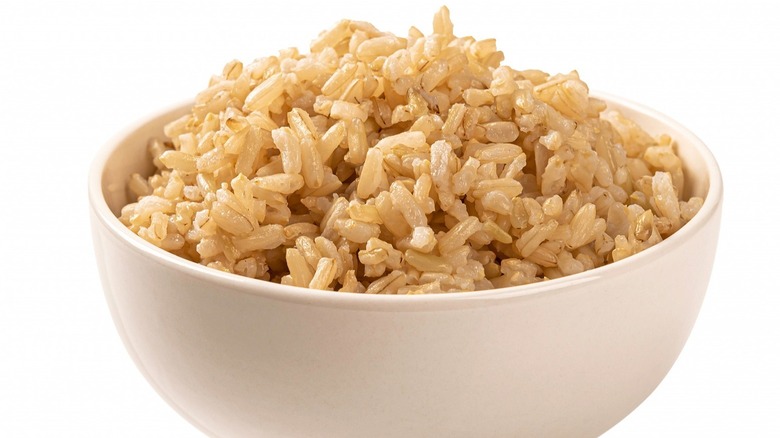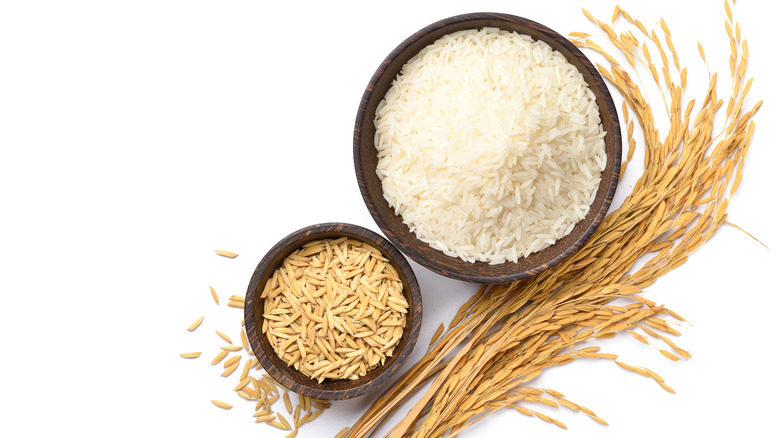Why You Should Keep The Lid On After Cooking Brown Rice
The United States consumes 4.6 million tonnes of rice annually (white and brown), per Statista. It stands to reason that the number of recipes available is in some way proportionate to this volume.
There is the seemingly standard recipe with the 2:1 ratio of water to rice, along with the let-it-boil-then-simmer method, per the Spruce Eats. Then there is Martha Stewart's flamboyant version, for example, with onions and shallots, per Insider, which is akin to the Mexican style that uses onions with garlic and parsley (via Food Network). What do these recipes have in common? They use white rice.
We know in Asia, they prefer the properly milled variant called white rice over the less milled variant with a bit of bran on. The reasons for this are primarily due to its nature (per Dr. Ben Kim) and secondarily because brown rice does not stick to each other as well as white rice. As we can imagine then, brown rice is less suitable for consumption with chopsticks and sushi, per Haven Hill Cuisine. Given that rice is originally Asian and the continent is responsible for 90% of the world's supply, their influence on related trends will be far-reaching irrespective of how long ago the food saw an international uptake. Perhaps, for this reason, brown rice and comprehensive recipes for it are not that common.
The proper way to cook brown rice
Fortunately, brown rice is usable in almost any white rice recipe, according to Southern Living. In order to execute the substitution successfully, a few things need to be kept in mind. The main difference in the cooking methods of white and brown rice is their times: brown rice can take up to 45 minutes to cook, while white rice needs approximately half that. The reason is that brown rice still has a layer of bran on it, unlike white rice, and thus it takes longer to soften (per the Food Network).
Brown rice should boil, and then the temperature dropped so that it simmers for 30 minutes or until the water has been absorbed and evaporated. After this has transpired, remove the pot from the heat and let it stand covered for ten minutes. Why do this?
According to Insider, the steam generated from cooking remains in the pot, allowing the cooking process to continue passively. The latter then gives the rice its desirable softer texture. While this applies to white and brown rice alike, it stands to reason that it is more so for brown rice, given its natural resilience to cooking.

